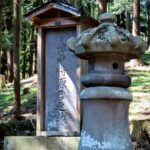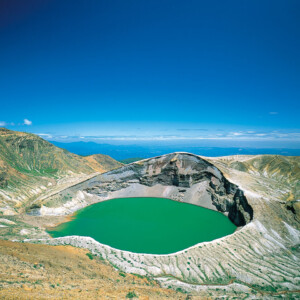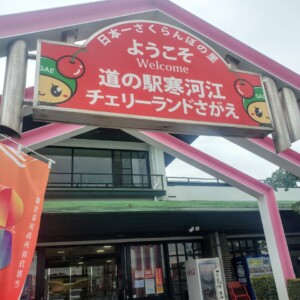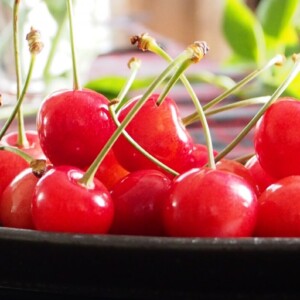
"Silver and Japanese Shrine" is the head office of sericulture care, with cherry blossoms over 1,000 years old [Fukushima Prefecture]
table of contents
Kaiyo Town is located approximately 1 km southwest of JR Aizuwakamatsu Station. Kogaiku Nijinja Shrine, the headquarters of the guardians of sericulture, is located here, and the sacred tree ``Minebarizakura,'' which is over 1000 years old, is located here.
Seriyokoku Shrine was once the only shrine in Japan.
was listed as one of 2,861 Shikinai shrines nationwide in the ``Engishiki Shinmecho, compiled in 927 There were only two shrines in Aizu District, including Isasumi Shrine in present-day Aizumisato Town.
Furthermore, there was no other shrine with the name ``Seriyokuni'', and at that time, it was the only Shrine in Japan.

Because of its name, it is thought that it is related to the sericulture industry.
The imperial history book ``Nihon Koki'' compiled in the early Heian period states, ``Two women each from countries such as Ise, Mikawa, Sagami, Omi, Tanba, and Tajima were sent to Mutsu Province to teach sericulture techniques for two years. There is a theory that the shrine was enshrined as part of the central government's plan to establish the sericulture industry in Aizu, but this is not certain.
Enshrined deity and divine virtue

The deity enshrined is
- Ukemochi no Okami
- Wakumusubi no Okami
- Amaterasu Omikami
Known as the guardian deity of sericulture, it is worshiped as the guardian deity of prosperity in agriculture, industry, and commerce, as well as traffic safety.

In the worship hall, you can see a cocoon plaque from a silk milling company, which is thought to be a company emblem made of silkworm cocoons, as a dedication.
Although it temporarily declined after the shrine building was burnt down, it was revived under the protection of the Aizu clan.
The shrine building, which is said to have been founded by Major General Ishibe Michihide, the prefectural governor, in 1011 was destroyed by fire, and the shrine temporarily declined. However, it was later rebuilt by Masayuki Hoshina, the first lord of the Aizu domain, who built a shrine and secured 20 koku of shrine land.
In 1807, the shrine building was destroyed again by fire, but it is said that it was rebuilt in 1819 by Yasunori Matsudaira, the 8th lord of the Aizu domain.

Perhaps because of this, the crest of the Seriyokuni Shrine is the Aizu Mitsudaira family crest, the Aizu Mitsudaira .
In 1876 after the Meiji Restoration, it was ranked as a prefectural shrine under the modern shrine rank system (now abolished).
The Minebari cherry tree at Seriyokuni Shrine is said to be over 1000 years old
``Minebarizakura'' in the precincts of Seriyokuni Shrine is said to have been planted in 1011 when the shrine was founded by Major General Ishibe Michihide and others, and is estimated to be 1,000 years old. It has been a sacred tree at shrines for more than 20 years.

The information board says "One of the Five Cherry Blossoms in Aizu," but generally speaking, the five cherry blossoms in Aizu are Ishibe Cherry Blossom (Aizuwakamatsu City), Toranoo Cherry Blossom (Aizu Misato Town), and Usuzumi Cherry Blossom (Aizu Misato Town). , Sugi no Itozakura (Aizuzakashita Town), Oshikazakura (Inawashiro Town), etc., so maybe it's the runner-up? It may be.
Seriyokuni Shrine<Information>
- Name: Kayokuni Shrine
- Address: 2-1 Kaiyocho, Aizuwakamatsu City, Fukushima Prefecture 965-0023
- Phone number: 0242-37-3166
- Official URL: Kogaisama of Aizu – Kayokuni Shrine


![The main house of Sendai's national treasure, Osaki Hachimangu Shrine! Osaki Hachiman Shrine in Tajiri, Osaki City [Miyagi Prefecture] Osaki Hachiman Shrine worship hall](https://jp.neft.asia/wp-content/uploads/2024/09/PXL_20240911_035448667-150x150.jpg)
![[Second Edition] Suga Masumi walked in Oga Peninsula - Interested in the strange rocks along the coast [Akita Prefecture] 1. Oga no Shimakaze-891-1. A copy of the Akita Prefectural Museum](https://jp.neft.asia/wp-content/uploads/2024/10/8dafd7ea0a7bd28f76a6f059db39c9de-150x150.jpg)

![A report on the experience of "Whiskey Collection Koriyama," Tohoku's first whiskey event! [Fukushima Prefecture] Whiskey Collection Koriyama](https://jp.neft.asia/wp-content/uploads/2024/10/IMG_0751-EDIT-150x150.jpg)
![The delicacy "Anko" is a delicious winter taste on the beach! [Fukushima Prefecture] Monkfish](https://jp.neft.asia/wp-content/uploads/2022/02/2054097_m-150x150.jpg)
![A tour of the 33 remaining Kannon in Minami Aizu. "Thirty-three Kannon" certified as a Japanese Heritage Site [Fukushima Prefecture] 11_MG_9631](https://jp.neft.asia/wp-content/uploads/2022/11/11_MG_9631-150x150.jpg)
!["Negaseki" is one of the three ancient Oshu sekies that surpasses Minamoto Yoshitsune and Matsuo Basho [Tsuruoka City, Yamagata Prefecture] 3809167_m](https://jp.neft.asia/wp-content/uploads/2023/02/3809167_m-150x150.jpg)
![What is "disc dumplings" in Fukushima City? Introducing recommended shops and history [Fukushima Prefecture] Disc Dumplings 1](https://jp.neft.asia/wp-content/uploads/2023/03/31485117_m-150x150.jpg)











